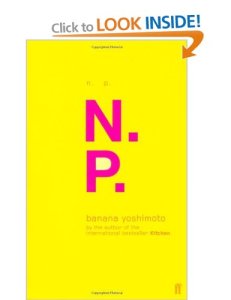Happy Halloween. With its unctuous miscegenation of darkness and kitsch, what better time for a top 10.Darkness has been creeping closer the past few weeks as I have started to slough off the need to write what other people tell me to write, and start to open teh veins of truth to let the literary blood I know needs letting. It feels, to quote these fine gentlemen like welcoming back an old friend. I look forward to listening to its whispers during November’s Nanowrimo exploits. In the meanwhile, here are my top 10 pieces of art from the dark side, each of them in some way transgressive or transformative, pushing the boundaries of the acceptable, either in absolute or in the sense of presenting us with unthinkable combinations. It’s not a “most terrifying” list. It’s not, as top tens are wont to be, a “look at the obscure stuff I know about” list. It’s just a list of things that have deeply affected me because they have forced me deep into my personal oubliettes in search of hitherto undiscovered truths. First, a reminder that my own contribution to the transgressive gothic of the season, SKIN BOOK, is available to download as a beautiful pdf – just click the pic
below if you dare.
I want to start with a mention of the brilliant, breathtaking Cody James. Sadly none of her work remains available online, but it will never be forgotten. Anyone who was at the Poetry Cafe the night she read Leviathan to a stunned audience who struggled to compute such a slight, unassuming writer so unflinchingly narrating such a graphic, lyrical story of outsiderdom and self-mutilation will have her words etched into them for life. Her words made the darkness beautiful, and she championed the autonomy of the outsider. For those of us who live there, that is a truly wonderful gift. 10. N.P. by Banana Yoshimoto
 It is hard to choose just one transgressive book. Gabrielle Wittkop’s The Necrophiliac is jostling close to the top of the pile for its exquisite lyricality and tenderness, but this heartbreaking tale of incest and art has the nod, because it is a book I come back to again and again. The elegence and sparseness of its prose removes the author from the scene altogether, leaving us, the readers, alone on stage with the full force of this remarkable tale. 9. Garden of Earthly Delights by Hieronymous Bosch
It is hard to choose just one transgressive book. Gabrielle Wittkop’s The Necrophiliac is jostling close to the top of the pile for its exquisite lyricality and tenderness, but this heartbreaking tale of incest and art has the nod, because it is a book I come back to again and again. The elegence and sparseness of its prose removes the author from the scene altogether, leaving us, the readers, alone on stage with the full force of this remarkable tale. 9. Garden of Earthly Delights by Hieronymous Bosch
My mother introduced me to this picture as a child, and I will never tire of it. It must be on everyone’s top ten, but that doesn’t make it any the less remarkable. 8. Henry: Portriat of a Serial Killer The perfect illustration of the notion of the banality of evil. This is the epitome of the dank, washed out, industrialised decaying mindlessness slow creep of depravity (whilst never unsteadying itself by creating, as so many later works did, its own chic). Like N.P. this is a reminder of how powerful art can be when it removes itself from teh artwork. 7. Hurt, Nine Inch Nails Talking of dank, industrialised, urban decay chic. Here because it would be impossible for it not to be. And because you get a two for one because no one can avoid also hearing the heartbreaking fragility of the Johnny Cash version at the same time. 6. Man Bites Dog The ultimate reminder of just how thin the veil is with which we hide our savagery from ourselves. 5. Kierkegaard, Fear and Trembling  I read Fear and Trembling as an impressionable 19 year old. I couldn’t cope with the weight of its awful message of the universal responsibility of the individual then. And I’m not sure I can now. And that is its power – it is the perfectly flat mirror we must hold up to ourselves. 4. Hannibal by Thomas Harris
I read Fear and Trembling as an impressionable 19 year old. I couldn’t cope with the weight of its awful message of the universal responsibility of the individual then. And I’m not sure I can now. And that is its power – it is the perfectly flat mirror we must hold up to ourselves. 4. Hannibal by Thomas Harris  Kitsch and cliched, but I make absolutely no apologies for that. I went on Mastermind with the good Doctor as my specialist subject, so here it is. Forget Anthony Hopkins. Both forget and don’t forget the terrifying cameo of Brian Cox. Forget the TV series. Forget even the underground dialogues of Red Dragon and The Silence of the Lambs. This is one of the towering achievements of late twentieth century literature – if Thomas Harris hadn’t previously written poitboiling thrillers, it would be heralded as such. Treat it on its own merit and you will struggle to find a more wrenchingly powerful evocation of the attraction of darkness, and the deep ripples and rifts of nuance and variation to be found within its fabric. 3. Guernica
Kitsch and cliched, but I make absolutely no apologies for that. I went on Mastermind with the good Doctor as my specialist subject, so here it is. Forget Anthony Hopkins. Both forget and don’t forget the terrifying cameo of Brian Cox. Forget the TV series. Forget even the underground dialogues of Red Dragon and The Silence of the Lambs. This is one of the towering achievements of late twentieth century literature – if Thomas Harris hadn’t previously written poitboiling thrillers, it would be heralded as such. Treat it on its own merit and you will struggle to find a more wrenchingly powerful evocation of the attraction of darkness, and the deep ripples and rifts of nuance and variation to be found within its fabric. 3. Guernica
I wanted to limit myself to one work of modern art. Which is almost impossible. Tracey Emin intyroduced me to the true power of the confessional. Marcus Harvey hit me square between the eyes at an impressionable age wiuth the provocative power of transgression. Francis Bacon has created his own glorious hell on canvas (but as such is maybe too much in the Bosch tradition to warrant a separate space). Rothko introduced me to the beauty of nihilism, Pollock of chaos. But this, surely, is the profoundest word on the ineffable horror of humanity’s absolute, irreducible evil. It is the proof that it is possible for art to reach down to the very lowest circle of hell, and dredge back the terrible creatures from the deep it finds there. and, as such, it is a condemnation of every artist who pulls back from the brink and says “I cannot go there.” 2. The Piano Teacher by Elfriede Jelinek  Honesty is the central quality of every great work of transgression, indeed every masterpiece of the night. Or any difficult, close to the edge subject matter. Honsesty is the one barrier we have to put up to the charge of sensationalism, of milking the market or shocking for the sake of shock. The moment we hit a bum note or pull a punch, we’re sunk. Jelinek’s unflinching account of self-harm and sexual obsession never hits a single false note. She is so meticulous in her quest for truth that she almost invents a new way of writing narrative just to do it justice. 1. In memory Mortality is the final darkness. Its shadow hangs over every one of the works on this list. It behoves, therefore, to dedicate a space to two works which may well have made it anyway but which represent the apogee of the output of two colossuses of the creative world we have lost to the final sleep this year. I make no apologies for the sentimentality and cliche of the choices. But I do at least recognise they are sentimental and cliched. Nonetheless, their impact has been huge. The Wasp Factory was the first time I encountered the truly gothic in literature, the first time I was confronted with the glorious flights of possibility open to the writer when they turn off the self-censor button and let the story tell itself as it wants to be told. And Venus in Furs is, simply, peerless.
Honesty is the central quality of every great work of transgression, indeed every masterpiece of the night. Or any difficult, close to the edge subject matter. Honsesty is the one barrier we have to put up to the charge of sensationalism, of milking the market or shocking for the sake of shock. The moment we hit a bum note or pull a punch, we’re sunk. Jelinek’s unflinching account of self-harm and sexual obsession never hits a single false note. She is so meticulous in her quest for truth that she almost invents a new way of writing narrative just to do it justice. 1. In memory Mortality is the final darkness. Its shadow hangs over every one of the works on this list. It behoves, therefore, to dedicate a space to two works which may well have made it anyway but which represent the apogee of the output of two colossuses of the creative world we have lost to the final sleep this year. I make no apologies for the sentimentality and cliche of the choices. But I do at least recognise they are sentimental and cliched. Nonetheless, their impact has been huge. The Wasp Factory was the first time I encountered the truly gothic in literature, the first time I was confronted with the glorious flights of possibility open to the writer when they turn off the self-censor button and let the story tell itself as it wants to be told. And Venus in Furs is, simply, peerless. 



